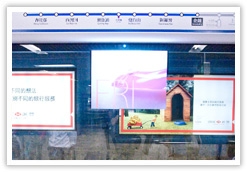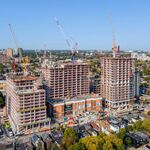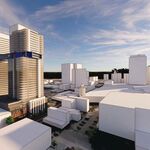kEiThZ
Superstar
It would be nice to have some more spacious stations. Montreal seems to do quite well at this. What do they do that's different? Is it just a matter of cost?
No. Not one subway line matches the SRT. And there are dwell times for that as well. I'm not saying that it's much faster; but it isn't slower, which is what some here try and pretend.Thank you, you just answered your own question / contradicted your own position.
I disagree. Not only does the SRT have a dwell time, but given the reports of how overloaded it is in rush hour, it's more strained as a subway train at peak.In short, the average speeds tell nothing about the operating speed, and I am reasonably sure that the subway runs faster than the RT.
And you conveniently ignored the most important part of the logic, which is the longer station spacing and larger number of stations.No. Not one subway line matches the SRT. And there are dwell times for that as well. I'm not saying that it's much faster; but it isn't slower, which is what some here try and pretend.
The technology is clearly not suited to the Toronto climate; but let's trash it for the right reason!
I disagree. Not only does the SRT have a dwell time, but given the reports of how overloaded it is in rush hour, it's more strained as a subway train at peak.
Acceleration has nothing to with speed. And saying that the trains are designed to be smaller and lighter would automatically imply higher speed, is like saying streetcars and peoplemovers, being designed to be lighter and smaller, should have higher speed than the TGV or shinkensen because the latter are bigger and heavier. Those are simply different and unrelated design criteria, and one does not imply the other.These things were designed to be smaller, lighter, with faster acceleration; why would one not assume that it would be faster?

If the stations were infinitely spaced perhaps - but to suggest that the average speed in the subway has nothing to do with the acceleration only indicates that you flunked Newtonian mechanics!Acceleration has nothing to with speed.
I almost thought you were making a joke, but seems like you misunderstood me (and things in general), purposely or otherwise.If the stations were infinitely spaced perhaps - but to suggest that the average speed in the subway has nothing to do with the acceleration only indicates that you flunked Newtonian mechanics!
And here's proof. If the acceleration of the train out of the station is reduced from 1 m/s² to 0 m/s², does the speed of the train change.
They exist, though the projection isn't from trackside but from the platform:I wonder if it would be possible with PSDs to install a video projector on the track side of the screens, which could project commercials onto the screens. As the train would pull up, the projection would be interrupted and you would see the train.
Seems like something they would have "in the future." The future or Minority Report, whichever comes first.

When a train spends much of the journey time between two stations accelerating or deccelerating, then clearly the average speed is going to be a function of of the acceleration. The top design speed is irrelevent; an ALRV can in theory operate at 80 km/hr - yet never is."Acceleration has nothing to [do] with speed" was referring to your assertion that trains (or anything) being designed to have better acc automatically implies they are designed to operate at higher speed, which is false.
EXACTLY. A TRAIN THAT ACCELERATES/DECELERATES FASTER (PERHAPS THE ART) CAN THUS SKEW THE AVERAGE SPEED EVEN MORE TOWARDS APPEARING FASTER THAN A SLOWER-ACCELERATING TRAIN (LIKE AN HRT SUBWAY). (for like, the third time)When a train spends much of the journey time between two stations accelerating or deccelerating, then clearly the average speed is going to be a function of of the acceleration. The top design speed is irrelevent; an ALRV can in theory operate at 80 km/hr - yet never is.
That I don't disagree with, when we are talking from a service/average speed perspective. Glad we're agreeing on somethingWhich why using the current SRT technology will yield a faster service than using the current subway technology - as long as there is no snow!
Though I guess, assuming the crowding and weather situation doesn't differ significantly between having or not having the ATO/ATC, faster acceleration etc could still produce a significant net increase in average speed (don't know about the 10% figure, of course)Now, 10% is fairly optimistic, even though that only translates into a 3km/h faster average. I know that Steve Munro is extremely skeptical about that 10% increase. There's a good reason to be skeptical, too, since there are other factors that can keep the train speeds at a slower average, and include things like passenger crowding and weather, among other things.




